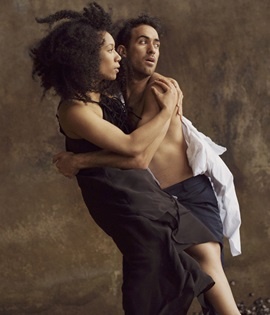UNITEC DANCE SHOWCASE 2016
Raye Freedman Arts Centre, Gillies Avenue (Cnr Silver Road) Epsom, Auckland
17/11/2016 - 20/11/2016
Production Details
Unitec’s end of year dance showcase featuring new work by guest choreographers Malia Johnston, Claire O’Neil, Nancy Wijohn, Tupua Tigafua, Katie Burton and Paul Young.
Thu 17 Nov @7.30pm
Fri 18 Nov @7.30pm
Sat 19 Nov @7.30pm
Sun 20 Nov @7.30pm
Venue: Raye Freedman Arts Centre, cnr Silver Rd/Gillies Ave, Epsom Girls Grammar
Cost: $15 adult, $10 concession (unwaged, senior) and $5 student
Tickets: https://www.iticket.co.nz/events/2016/nov/unitec-dance-showcase-2016#/buy-tickets or call (09) 361 1000.
Dance , Contemporary dance ,
2 hours
Secure and confident performances and choreographic collaborations
Review by Jenny Stevenson 20th Nov 2016
There is a pleasing element of circular synergy in this latest showcase of dance works from the graduating students of the Unitec Dance programme curated by Academic Leader, Charene Griggs: all the guest choreographers are either graduates of Unitec itself, or of its precursor Performing Arts School, and Creative Director Michael Parmenter has had an ongoing 25-year association with the school. The result is a continuum, an evolving spectrum of dance practice and the progression of a distinct Unitec style which has become one of the cornerstones of dance performance in Aotearoa. The dancers and choreographers alike are grounded in this body of dance knowledge so that when they participate in choreographic collaboration (as is the case in this programme), it is seamless and the choreographer’s intent can be fully realised.
The Showcase 2016 programme is further structured to demonstrate student development from the 1st year intake through to the soon-to-be graduates of the three-year programme. For all the students, choreographic practice is an integral part of their training so that they can make their collaborative contributions with confidence and in so doing are empowered in their creativity. The 3rd year dancers are particularly adept in this respect and their dance-making and performance abilities are both secure and polished.
Choreographer Malia Johnston has addressed different modes of movement in her work Sketch. Waltz .Jam, which fully illustrates this collaborative approach. It opens with dancer Kura Williams spotlighted between the hand-held, partial opening of the stage curtains, as she moves herself in a full circular motion of the upper body that gradually increases in range. All 16 graduates then participate in non-stop movement sequences of varying gradations, often illuminating a single figure out of a sea of shifting bodies. It is a strongly focussed work that maintains momentum through a variety of stylistic shifts, performed to a score by Eden Mulholland, against a backdrop of audio-visual design by Johnston.
In her work Trove, choreographer Claire O’Neil places her dancers firmly in the era of the 1960s with its elements of “counterculture and revolution of social norms”, giving them stereotypes to portray, as a means to discover historical material and make it relevant to the present day. Their positions are defined in space and they rarely deviate from moving forward and backwards along fixed trajectories, in their assigned positions. Its strength as a dance work is inherent in the contact the dancers must make with the audience, while maintaining character. This is a welcome aspect of the work – not always present in current practice – allowing the dancers’ personalities to shine through and embody their movement in a way which is not always possible when focus is internal.
Choreographer Nancy Wijohn also explores activism in her highly energetic work Violet and Green to music by Led Zeppelin and James Risbey. Here the dancers are often elevated to high status, through sitting on shoulders of other dancers, perhaps embodying the power bases against which they are moved to protest. Wijohn has worked to create “instinctual ways of moving” which lends cohesion to the work and a degree of authenticity to the movement vocabulary, with fast-moving sequences interspersing the languid strutting of the giant figures.
Good to be Alive, which is choreographed by Tupua Tigafua with rehearsal and creative input from Michael Parmenter, showcases the exuberance of the 2nd year dance students to great effect and was one of the crowd favourites of the evening. The dancers clearly embrace Tigafua’s quirky movement vocabulary, with some clever staging enabling multiple chances to shine by individual dancers. The catchy music by Bobby McFerrin, Shel Silverstein and Vaniah Toloa enhanced the feel-good atmosphere of the work.
The 1st year dancers tackled Penunbra, the sophisticated choreographic collaboration by Katie Burton and Paul Young, with real poise. The clever patterning echoing M C Escher’s complex “infinite spirals” enabled them to move in challenging spatial pathways and to line-up and disperse rapidly, to create continuous movement. Chris O’Connor’s original musical composition was haunting and appeared to be an inherent component of the choreographic design as did the lighting of Sean Curham, which clearly illustrated the concept of the penumbra.
Copyright © in the review belongs to the reviewer





Comments